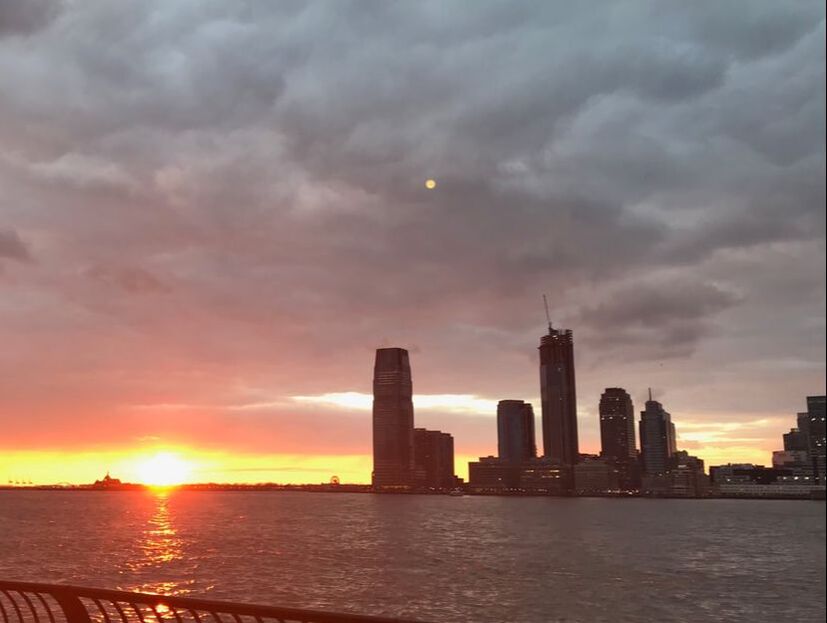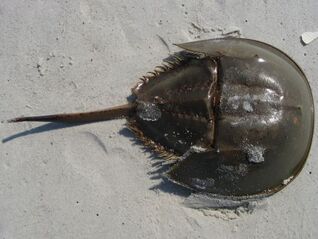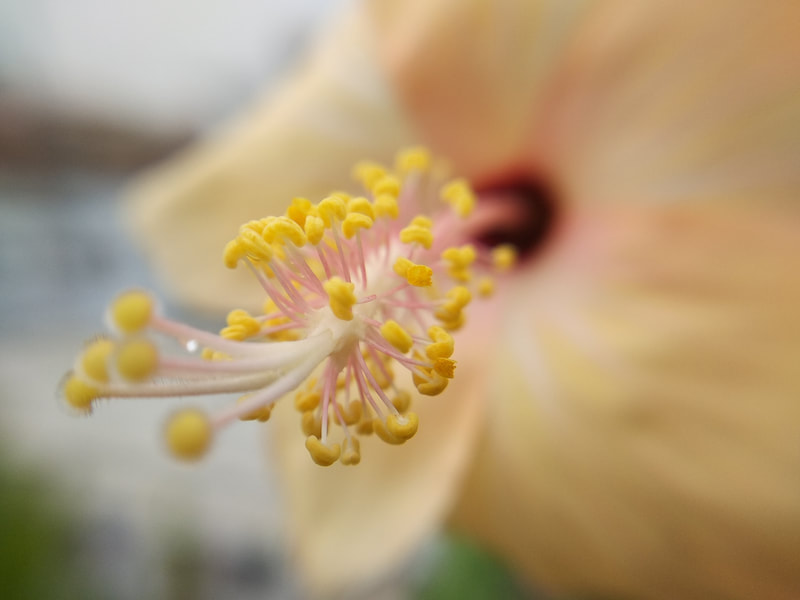 Sun, moon, Hoboken, and the Hudson Sun, moon, Hoboken, and the Hudson Summer solstice, when the sun reaches its highest point in the sky, is an opportunity to connect with cyclical changes and embrace the bounty of nature around us. Summer is upon us, a time of abundant growth. The day that provides the most light, it is perhaps then a time for enhanced clarity and insight as well as chance to appreciate the world's plenitude. Derived from the Latin words "sol" (sun) and "sistere" (to make stand), the word "solstice" connotes an inflection point, a moment when what is before differs from what is after, as is fitting for the day that marks a shift from the sun progressing northward to tracking southward and with this a shift from lengthening daylight hours to shortening daylight hours. Humans have a rich traditions honoring the summer solstice. Ancient Northern and Central European pagans--including Germanic, Celtic and Slavic tribes--celebrated Midsummer with bonfires, which were thought to enhance the sun’s energy and promote a good harvest for the fall. Early Christians celebrated the day as St. John's Day, commemorating the birth of John the Baptist. The Great Pyramids of Egypt are situated such that, from the viewpoint of the Sphinx, the sun sets directly between two of the pyramids on the summer solstice. The ancient Chinese regarded the summer solstice as connected with the feminine force “yin,” and celebrated with festivities honoring Earth, femininity. The Mayans of Central America built structures to align with the sun's solstice path. And many Native American tribes engaged in solstice rituals, some of which continue to be practiced. The Sioux sun dance entails cutting and raising a tree as a symbolic connection between the heavens and Earth, placing teepees in a circle to represent the cosmos., and participants decorating their bodies in colors of red (sunset), blue (sky), yellow (lightning), white (light), and black (night). While many ancient cultures were attuned to the sun's cycles and engaged in solstice rituals, contemporary urban dwellers may fell less connected to this astronomical happening. But as entrenched as we may be in our day-to-day lives, the eternal dance between the Sun and Earth continues, a reminder of the extent of time beyond humanity and forces that are bigger than ourselves.
1 Comment
 Horseshoe Crab. Photo by Anne W. York Horseshoe Crab. Photo by Anne W. York Far more than a concrete jungle, New York City boasts miles of coastline, which in late May and early June are the setting of an annual ritual that has taken place for nearly 500 million years, one of the oldest rituals to occur among animal species. During a recent stroll on Orchard Beach at Pelham Bay Park in the Bronx, I came across horseshoe crabs pulling up onshore. Intriguing looking, ancient creatures, they remind me of small tanks, able to ambulate while being fully protected by a hard carapace. Japanese legend too identifies the horseshoe crab with military symbolism. It was said that brave warriors who died honorably in battle were reborn as horseshoe crabs, with their shells like samurai helmets, forever traversing the ocean floor. Why were these creatures migrating onto the sand? Why now? Thanks to the Historical Signs Project of the NYC Department of Parks and Recreation, answering my questions -- and more -- was a nearby sign, "Horseshoe Crabs in New York City Parks, Orchard Beach - Pelham Bay Park." This is what it said about the fifth oldest species (after cyanobacteria, sponge, jellyfish, and nautilus), which has contributed greatly to medical science: Every May and June, horseshoe crabs emerge from Pelham Bay and Long Island Sound onto Orchard Beach in Pelham Bay Park. Female horseshoe crabs arrive on the beach to lay their eggs, with their male counterparts literally in tow. Males grasp onto the back of the female's shell using their specially adapted, hooked legs, sometimes two, three, or four onto one female. When they arrive on the beach, female horseshoe crabs dig a hold in the sand and lay up to 20,000 tiny olive-green eggs . The males then rush to be the first to fertilize. The process is heavily tied to the lunar cycle and its effects on the tides. The mating begins when the moon's force is strongest and the high tide allows the horseshoe crab to venture further onto the beach. As the force weakens, the water is never able to reach the eggs. Two weeks later, when the moon's force peaks again, the eggs are ready to hatch and the water sweeps the newborns into the sea. While this timing has provided protection from the sea, the eggs face other dangers. The thousands of protein-rich eggs provide a feast for hungry migrating birds, which can eat enough to double or even triple their body weight before moving on. Some birds are believed to time their migration to coincide with this mating ritual and its resulting source of nutrition. The horseshoe crab...has been around since before he dinosaurs.... This prehistoric creature may resemble a crab, but is actually more closely related to the spider and scorpion. While the horseshoe crab has a tough exterior that has helped its survival, it is one of the most harmless creatures on the seashore. Its high tolerance for pollutants has also allowed the horseshoe crab to thrive where other species have failed. When not swarming on the beaches in the spring, the horseshoe crab stays mainly on the ocean floor, feeding on mollusks, worms, and seaweed. In the winter, it burrows into the ocean sediment. While the lifespan of a horseshoe crabs in the wild is not clear, they have been known to live up to 15 years in aquariums. This "living fossil" plays an important role in modern medical science. Its blood contains Limulus Amebocyte Lysate (LAL), which is used by scientists for the detection of bacterial toxins. Tests using LAL are required by the Federal Drug Administration for medications and vaccines. Blood from the horseshoe crab is also used to make a variety of products, from fertilizers and conch bait to hairspray and contact lenses. These uses have led to the overharvesting of the horseshoe crab and a decline of its population in the Atlantic. However, the ancient horseshoe crab can still be seen crawling onto the shores of the Bronx, at Orchard Beach, every year. Botanists call flowers that have either male or female sex organs "imperfect", whereas flowers that contain both male and female sex organs are called "perfect". What a contrast to the negative views about human sexual diversity among all too many communities! June marks the arrival of "Pride Month", celebrating sexual diversity and gender variance. The month includes parades and other events to foster a positive, self-affirming stance against violence and discrimination toward LGBTQ people. June, 2019 promises to be the largest celebration of LGBTQ pride in history as it marks the 50th anniversary of the rebellion at NYC's Stonewall Inn in response to a police raid. Tolerance for human gender diversity may be an ongoing struggle, but gender variability is well recognized in the plant kingdom. Some trees, such as white ash and willow, have male and female flowers on different trees (that is, individual trees bear either male or female flowers). Others, such as beech and oak, have separate male and female flowers on the same tree. And others, such as magnolias, serviceberries, and elms, produce flowers with both male and female parts. That gender isn't binary is apparent in the plant kingdom. And, as the courageous people standing up for LGBTQ rights have shown us, gender isn't binary among humans either. Rather, among many natural creatures, ourselves included, there are variations of gender expression, with gender manifesting along a spectrum rather than black or white. There is much that plants can teach us, including that sexuality manifests in diverse ways. |
About this Blog
Hi! I'm Nancy Kopans, founder of Urban Edge Forest Therapy. Join me on an adventure to discover creative ways to connect with nature in your daily life, ways that are inspired by urban surroundings that can reveal unexpected beauty, with the potential to ignite a sense of wonder. Archives
April 2023
Categories
All
|



 RSS Feed
RSS Feed